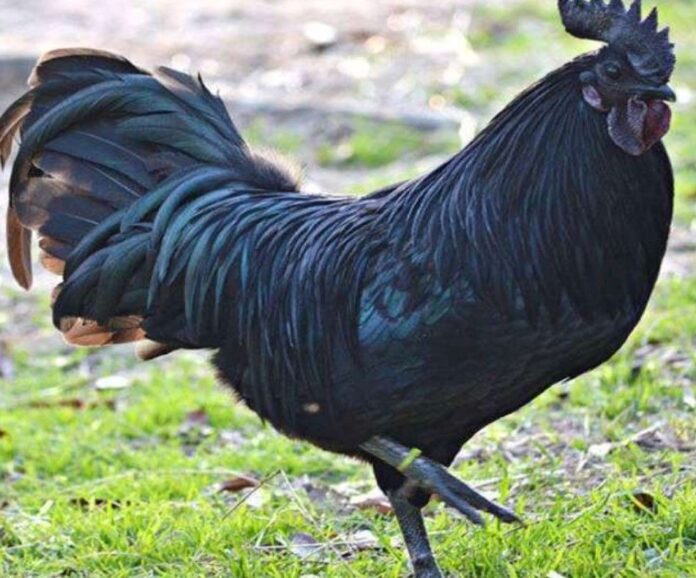IMPORTANCE OF CONSERVATION OF INDIGENOUS BREEDS OF LIVESTOCK AND POULTRY
Donthu Sai Pranathi1, Deepika Jamadar2, Naveena Antony3
1Senior Research Officer, Natural Remedies Pvt. Ltd.
2Assistant professor, Veterinary College, Bidar
3Assistant professor, Veterinary College, Bidar
Abstract
Biodiversity is an essential asset for sustainable survival on Earth. Livestock genetic diversity refers to the genetic components of breeds and native animals. Indigenous livestock are vital for global biodiversity because they may possess genes and gene combinations that could be beneficial to agriculture in the future. Farmers have historically modified the available genetic material through selective breeding across generations. This diversification has been driven not only by physical and biological adaptation to the environment but also by economic, cultural, religious, and survival factors (4).
Key words: conservation, indigenous breeds, poultry, livestock census .
In India, there is a diverse range of native breeds of cattle, buffalo, goat, sheep, swine, equines, camels, and poultry, as well as other undocumented populations/breeds of animals like pigs, mules, donkeys, yaks, mithuns, ducks, and quails. These domesticated livestock and poultry breeds have evolved over time to adapt to specific ecological niches and meet local needs. Indigenous breeds possess special adaptations and gene combinations, such as disease resistance and the ability to thrive in harsh climatic conditions and with low-quality feeds, which are typically absent in high-producing exotic breeds. It is crucial to optimize the biological potential of these livestock genetic resources under specific agroclimatic conditions, as they have evolved through natural and human selection and maintain significant diversity .
The livestock sector, with its abundant Animal Genetic Resource (AnGR) base, has become the fastest-growing sector in India, making significant contributions to GDP and providing food and nutritional security. Rural poor and landless farmers heavily rely on animals and their products and services for their livelihoods. It is worth noting that approximately 52% of India’s population is directly or indirectly dependent on agriculture and related activities . According to the 20th Livestock Census in 2019, India had a population of 535.78 million
livestock and 851.81 million poultry. From 2012 to 2019, the cattle and buffalo population increased by about 1% per annum each, while sheep increased by 14%, goats by 10%, and chickens by 16.8% per annum. However, the population of horses, camels, donkeys, mules, pigs, mithuns, and ducks has declined .
The table no. 1 illustrated the changes in indigenous population in India between the 19th and 20th livestock census.
The main challenge in conserving genetic resources is determining their economic value. Although the value of conservation is acknowledged, there is a need to develop quantifiable economic models for calculation. Some indigenous breeds may no longer be profitable, and costly conservation programs may be required to maintain diversity values. However, other indigenous breeds can be conserved through sustainable use, which can often be a more cost-effective approach.
To ensure long-term conservation and continuous genetic improvement of indigenous breeds, breeding plans should establish elite herds in their native habitats to produce superior young males for future breeding. Many government and non-government-owned livestock farms currently maintaining indigenous breeds are in poor condition and at risk of closure due to inconsistent breeding objectives and plans, inadequate funding, manpower, and other resources. These farms already have basic infrastructure that can be strengthened to support proper herd size and implementation of conservation, breed improvement, germplasm multiplication, dissemination, demonstration, and utilization programs .
In-situ conservation, which involves maintaining breeds within their natural habitats, is one of the most effective methods for breed preservation. Successful in-situ conservation schemes have been established for various livestock breeds in partnership with government and non-government research and development agencies. Similar models should be developed and replicated for other breeds . Developments in cryopreservation and reproductive technologies have made significant contributions to conservation strategies. Ex situ conservation, which involves preserving genetic material through cryopreservation, is important for conserving germplasm. Preserving cryopreserved semen doses, ova or embryos, and DNA sequences from important and endangered breeds can serve as invaluable repositories for indigenous livestock genetic resources. Biotechnological tools and techniques, such as somatic cell nuclear transfer (SCNT), cloning, embryo transfer, embryo micromanipulation, and genome resource banking, can also be employed for conservation purposes .
In conclusion, concerted efforts are needed to establish a mechanism that safeguards and meets the needs and aspirations of future generations regarding livestock and poultry genetic resources in India.
REFERENCES
- Khate, K., Kishore, A., Mukesh, M., & Sodhi, M. LIVESTOCK DIVERSITY IN INDIA AND TOOLS FOR ITS MANAGEMENT. EVERYMAN’S SCIENCE, 182.
- Pundir, R. K., Niranjan, S. K., & Behl, R. (2013). Sustainable utilization of indigenous animal genetic resources of India. National Bureau of Animal Genetic Resources: Karnal, Haryana, India.
- Sahoo, A., Bhatt, R. S., & Sarkar, S. As per20″ Livestock census (2019) India ranks 3″ in sheep and2″‘in goat population. The total sheep in the country is.
- Singh, K. V. (2022). Biodiversity and Conservation Status of Indigenous Livestock of India. In Biodiversity(pp. 143-155). CRC Press.
Importance of conservation of indigenous breeds of livestock and poultry


